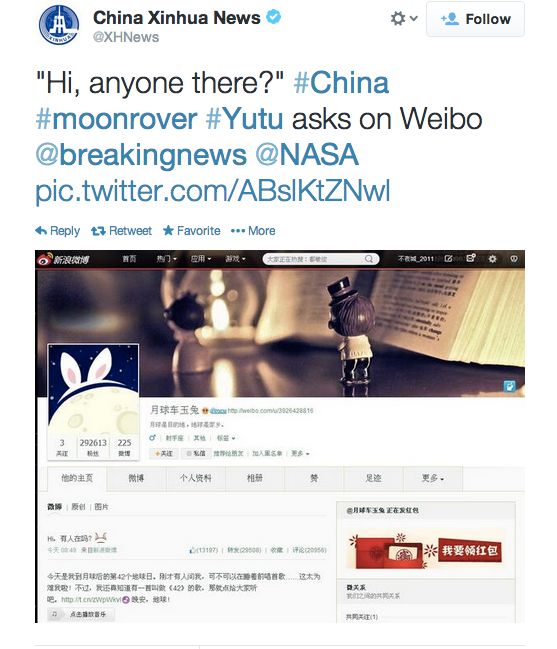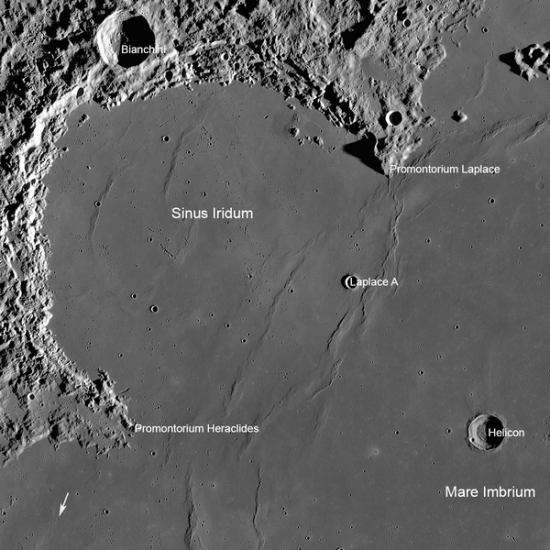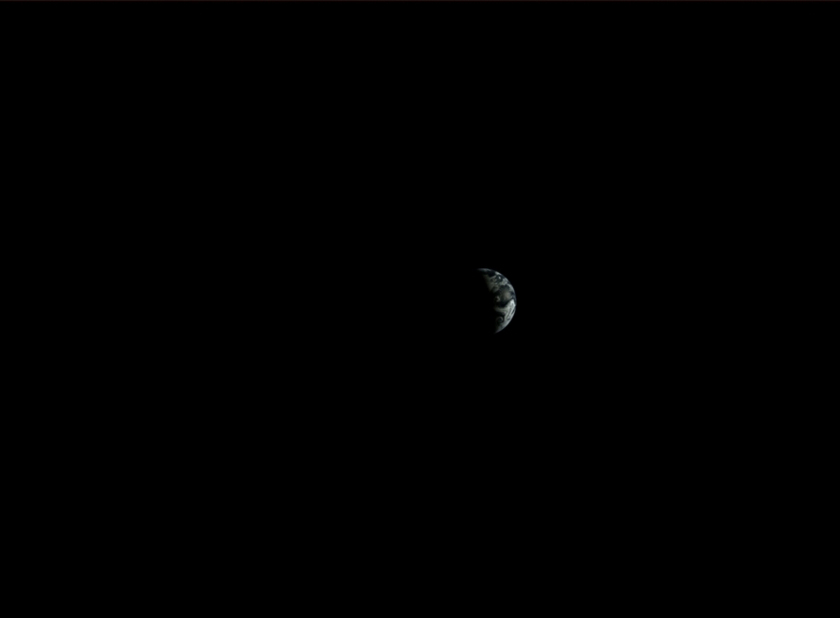It was widely reported on Wednesday that China’s first moon rover – called Yutu or, in English, Jade Rabbit – failed to connect with mission controllers in Beijing following its second hibernation in the long, cold lunar night. Then yesterday afternoon, another report suggested signs of life from Yutu. Today (February 13, 2014), a spokesman with China’s lunar probe program has said that Yutu is able to pick up signals, although it is still experiencing a mechanical control abnormality, according to an English-language report from news.xinhuanet.com. Pei Zhaoyu, the spokesman, said:
… the rover stands a chance of being saved as it is still alive.

One of the first to pick up a signal from Yutu yesterday was an amateur group that monitors radio signals from deep space (uhf-satcom.com). It reported that a downlink signal from the Yutu rover had been detected, indicating that Yutu is back.
Chinese media first reported Yutu’s malfunction on January 27, as night was falling in the rover’s location, when Yutu was about halfway through its three-month mission to study the moon. At that time, China’s state-run Xinhua news released a report in the voice of the rover itself, saying:
Although I should’ve gone to bed this morning, my masters discovered something abnormal with my mechanical control system. My masters are staying up all night working for a solution. I heard their eyes are looking more like my red rabbit eyes.
Nevertheless, I’m aware that I might not survive this lunar night.


So that its delicate electronics could survive the extreme cold of a lunar night, the rover needed to hibernate, or shut down most of its systems, when nighttime came to the portion of the moon on which the rover sat. If a mechanical problem kept it from hibernating properly, then Yutu could “freeze to death.”
The Chang’e 3 lunar lander – which carried Yutu to the moon and successfully landed on December 14, 2014 and released Yutu to the lunar surface – is apparently still in contact with mission control.
China’s Chang’e 3 mission is the first soft landing on the moon since 1976. China is only the third country in the world to land on the moon, after the U.S. and former Soviet Union.
Whatever happens … hats off to Yutu and its builders!

Bottom line: China’s Yutu rover on the moon is apparently not dead. Its controllers in Beijing are now reporting a signal.











